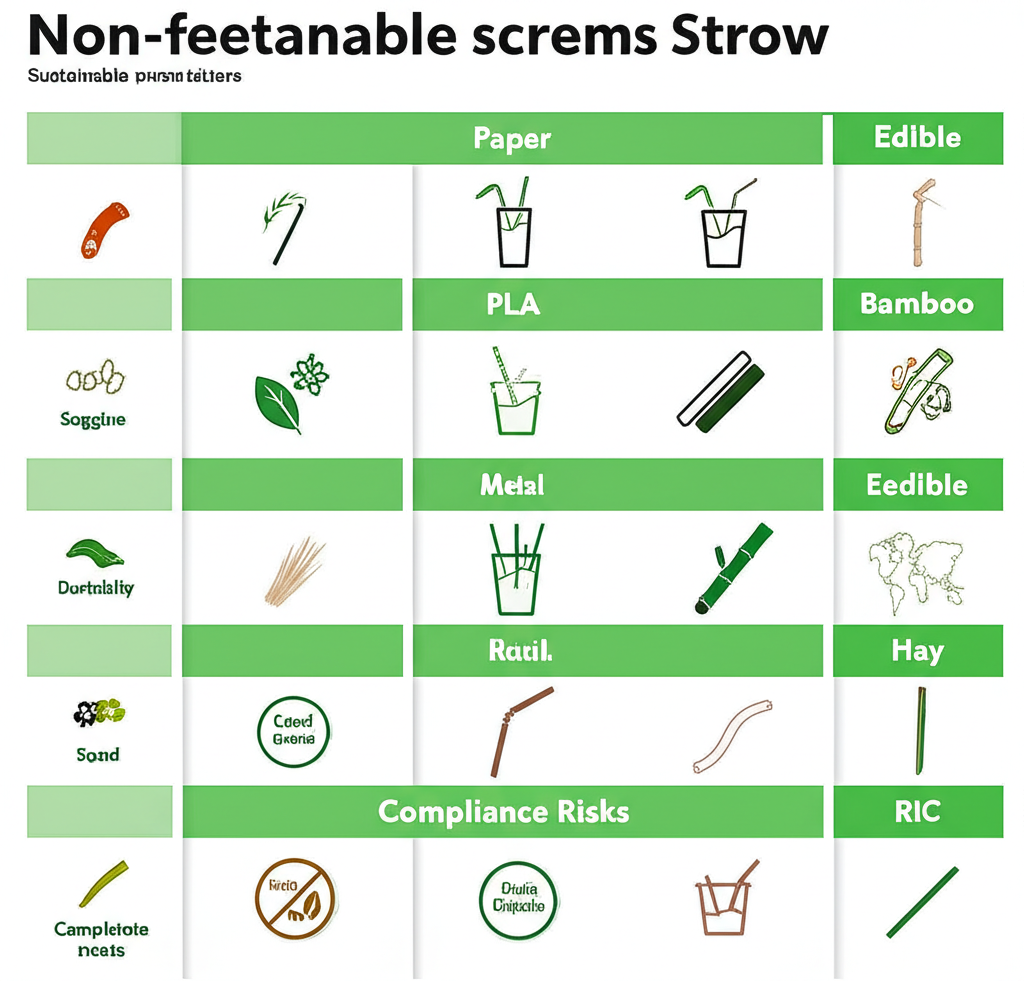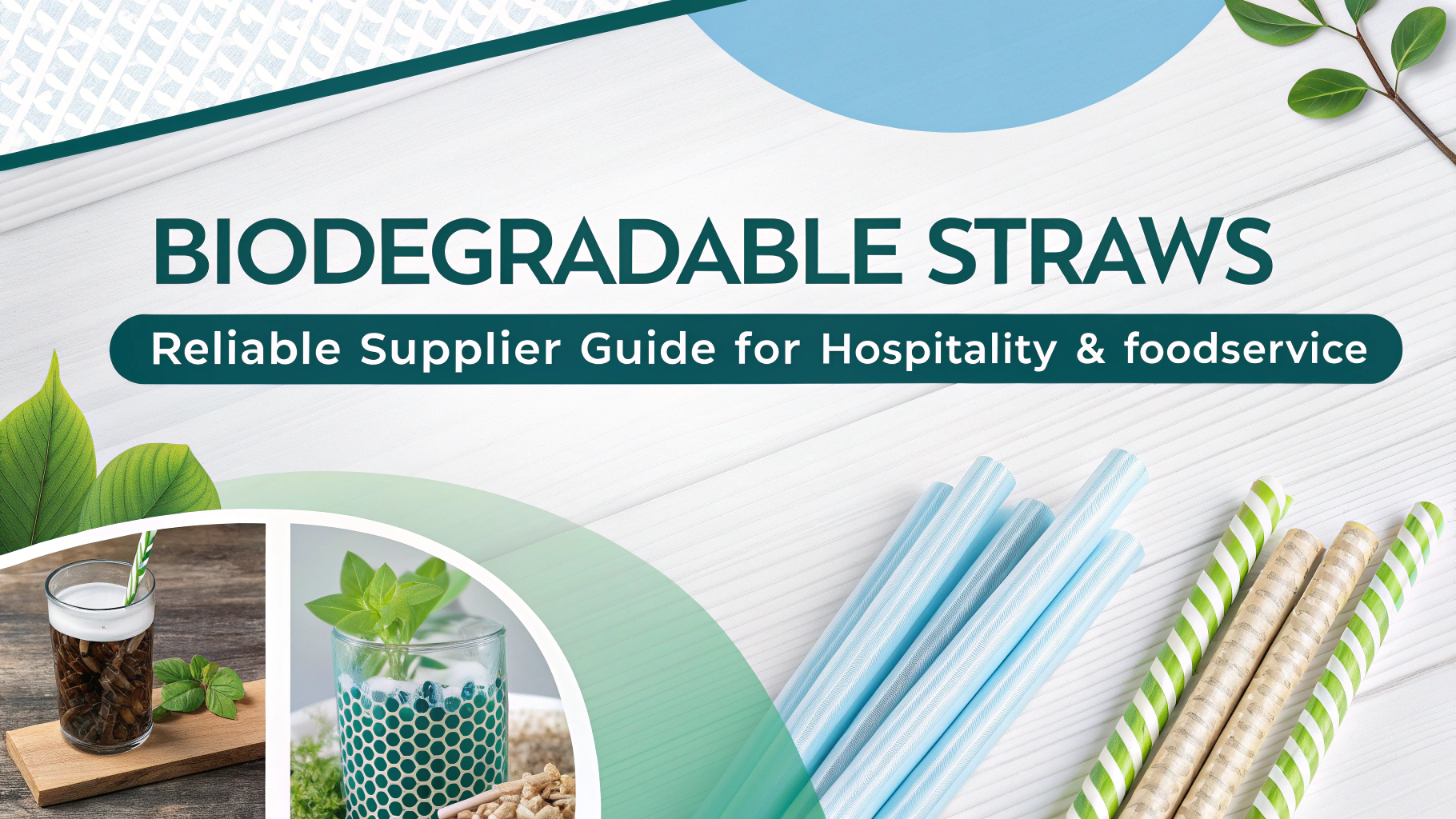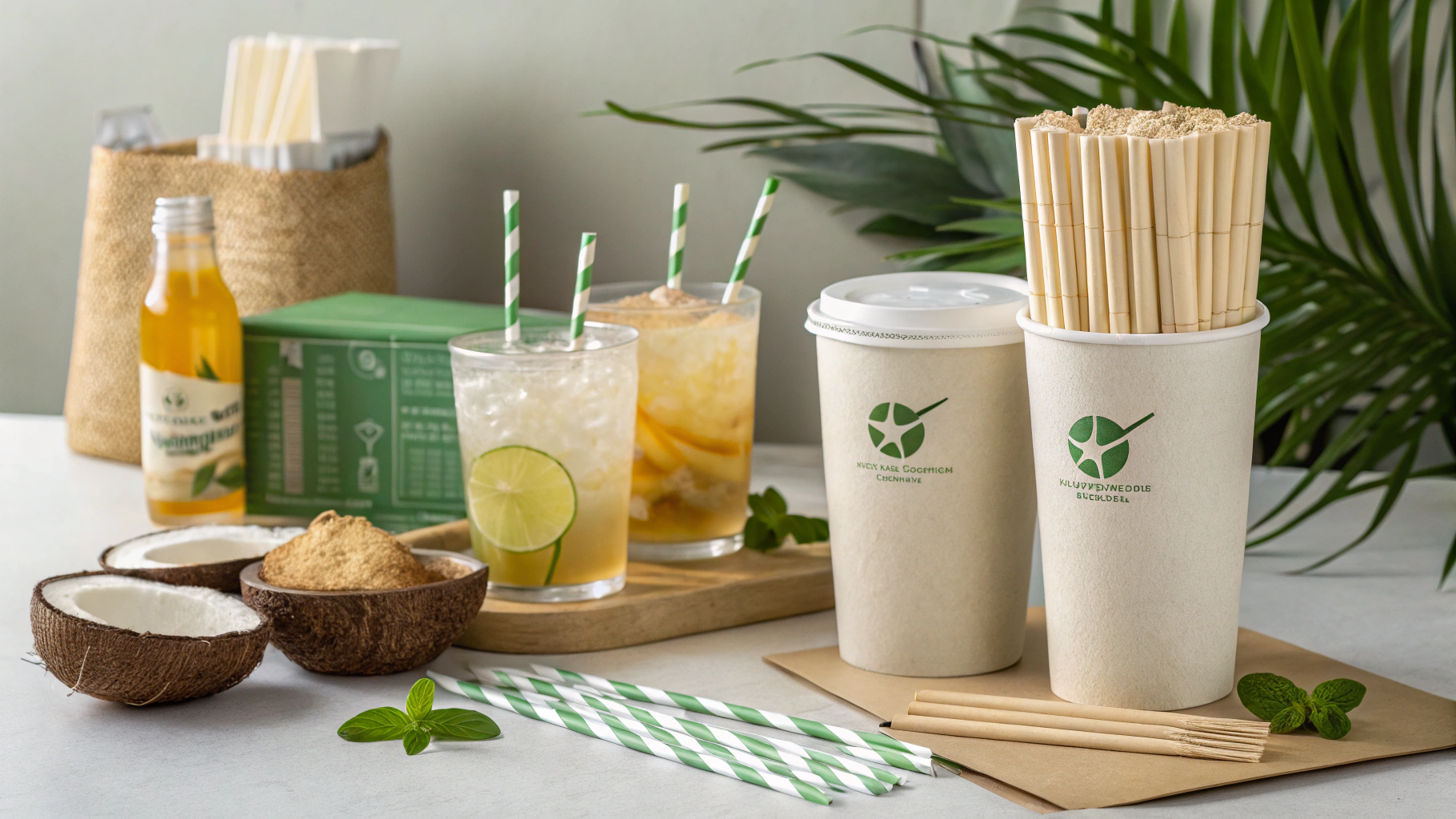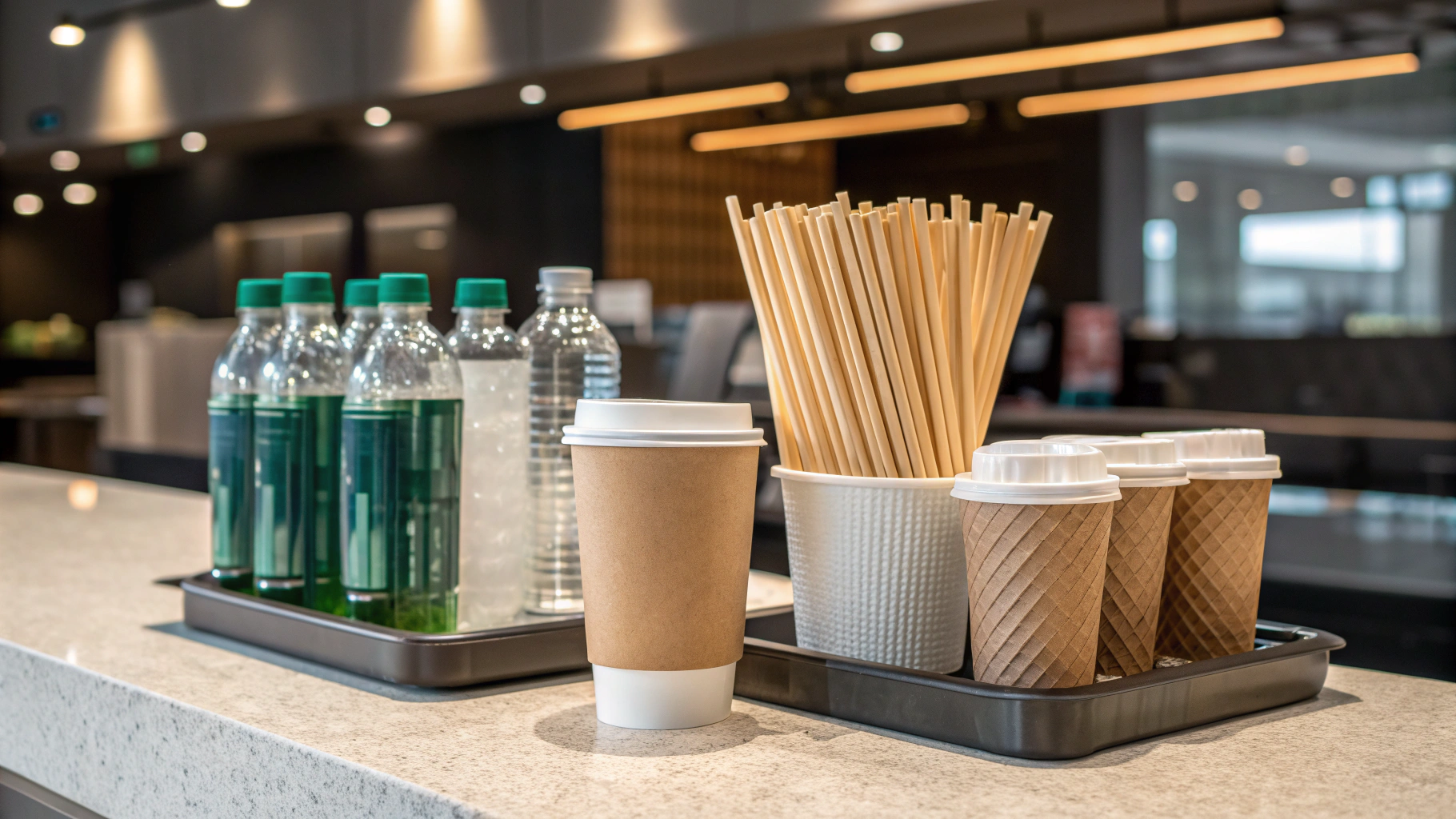The once ubiquitous plastic straw has become a symbol of a bygone era, replaced by a complex landscape of alternatives driven by an escalating global demand for sustainability. For procurement managers, operations directors, sustainability officers, and supply chain executives, the shift isn’t just about choosing a new product; it’s about navigating a high-stakes challenge that directly impacts compliance, customer experience, and long-term brand value. The global eco-friendly straws market, projected to reach an impressive USD 17.46 billion by 2030 and potentially USD 25.1 billion by 2035, underscores a fundamental market transformation. Businesses that fail to adapt proactively risk not only regulatory penalties but also significant commercial repercussions, including alienating an increasingly eco-conscious consumer base and facing operational inefficiencies.
The journey of the drinking straw, from ancient Mesopotamian gold tubes to Marvin Stone’s 1888 paper invention and the subsequent plastic revolution of the mid-20th century, has culminated in this critical juncture. The durability and low cost of plastic straws once made them the default, but their environmental legacy – epitomized by the millions polluting oceans and harming marine life – triggered a global reckoning. Today, the focus is squarely on rigid, non-flexible alternatives, reflecting a broader societal pivot towards environmental responsibility. This shift, however, is not without its complexities, demanding a nuanced understanding of materials, performance, and stakeholder needs.

The environmental imperative to move away from single-use plastics has never been clearer. Viral imagery, such as the widely circulated 2015 video of a sea turtle with a plastic straw embedded in its nostril, profoundly galvanized public opinion and spurred a wave of bans and limitations on disposable plastic straws across cities and nations. This legislative and consumer-driven push directly impacts corporate social responsibility, placing the spotlight on every component of a business’s operational footprint – including its straw choices. A brand’s commitment to sustainability, or lack thereof, significantly shapes its public image and stakeholder perception, influencing everything from investor confidence to customer loyalty.
However, the transition has exposed a critical dilemma: balancing environmental goals with practical performance and crucial accessibility needs. Early generations of eco-friendly straws often fell short, leading to widespread consumer dissatisfaction. Paper straws, while biodegradable, are frequently criticized for getting soggy, disintegrating quickly, and even imparting an unpleasant papery taste to beverages. Some studies also raise concerns about their carbon footprint when rotting in landfills and the potential presence of “forever chemicals” (PFAS), linking them to health issues. Metal straws, though durable and reusable, can be unpleasant on teeth, impart a metallic taste, and pose injury risks for individuals with involuntary movements. Glass straws, while elegant, are fragile and present choking hazards if broken. Bamboo straws can degrade, leave a woody taste, and vary in quality, while pasta straws dissolve in hot liquids and present allergy concerns.
Crucially, the sustainability movement’s initial push for alternatives often overlooked the vital role plastic straws, particularly flexible ones, play for individuals with disabilities. Disability rights groups highlight that plastic straws offer a unique combination of strength, flexibility, and safety unmatched by many alternatives, making them essential for independent hydration and nourishment for those with limited mobility, poor motor coordination, or other medical conditions. This unacknowledged challenge has forced businesses to broaden their scope, ensuring that eco-friendly solutions do not inadvertently create barriers for a significant portion of their customer base. The operational costs of transitioning also extend beyond simple purchase price, encompassing new procurement strategies, adjustments to waste management, and potential supply chain reconfigurations. The wrong choice can lead to a direct negative impact on customer experience, increasing complaints, diminishing satisfaction, and ultimately affecting repeat business and brand reputation.

Navigating this intricate landscape requires a strategic, data-driven approach to sourcing sustainable, high-performing, and inclusive non-flexible straw solutions. The good news is that the market is rapidly innovating, driven by a global drinking straw market valued at USD 15.3 billion in 2023 and projected to reach USD 25.9 billion by 2031. This growth is fueled by increasing consumer awareness and stringent regulations against single-use plastics, particularly evident in leading markets like the U.S. and the UK, which boast strong regulatory policies and a high consumer preference for sustainable products. Asia Pacific, driven by urbanization and government initiatives, is also emerging as the fastest-growing region.
Comparison: A B2B Matrix of Non-Flexible Straw Alternatives
| Feature | B2B indflydelse | Overholdelsesrisiko | ROI-potentiale |
|---|---|---|---|
| Papirsugerør | Biodegradable, widely available. Prone to sogginess, altered taste. | Low plastic ban risk. Potential PFAS concerns in some varieties, higher carbon footprint (landfill). | Reduced plastic waste costs. Customer complaints on performance. |
| PLA (Plant-Based) | Plastic-like feel, compostable (industrial). Heat sensitive, higher cost. | Low plastic ban risk. Requires specific composting infrastructure; risk of mis-disposal. | Enhanced brand image. Higher initial procurement, lower waste in specific contexts. |
| Metal Straws | Reusable, durable, premium feel. Safety risks for certain users, not for hot drinks, cleaning logistics. | Low plastic ban risk. High injury liability if not managed correctly. | High for reusable programs (e.g., in-house dining). High upfront cost, cleaning labor. |
| Bambus sugerør | Natural, reusable/compostable. Inconsistent quality, potential taste transfer, degradation. | Low plastic ban risk. Potential allergen, hygiene concerns if not cleaned properly. | Good for eco-conscious branding. Moderate cost, variable lifespan, cleaning labor. |
| Hay Straws | Highly biodegradable, natural, tasteless (cold). Rigid, single-use, potential allergen, size limits. | Low plastic ban risk. Allergy concerns. | Strong eco-branding. Moderate cost, single-use model. |
| Spiselige sugerør | Novelty, fully degradable, zero waste. Higher cost, limited durability, taste impact, storage. | Zero plastic ban risk. Allergy and choking risk, spoilage. | High for innovative brand differentiation. High procurement, unique marketing. |

Manufacturers are investing heavily in research and development to address these performance issues. Innovations on the horizon include enhanced paper straws with improved adhesives and coatings that maintain biodegradability, advanced plant-based polymers like polylactic acid (PLA) derived from cornstarch or sugarcane fiber that mimic plastic’s feel, and even edible straws made from rice or seaweed, such as the Lolistraw, which are marine-degradable and fully consumable. While PLA straws offer a promising bridge, businesses must recognize they often require specific industrial composting facilities for proper breakdown. For a deeper dive into managing complex regulatory landscapes, especially concerning emerging chemical concerns, consider reviewing our guide onNavigating PFAS Regulations in Your Supply Chain.
Major corporations like Starbucks, McDonald’s, and Whole Foods have already spearheaded transitions to eco-friendly straw options, setting precedents for the industry. For example, Starbucks’ commitment to eliminate single-use plastic straws globally by 2020 significantly impacted the market, driving demand for alternatives. This movement has not been without its challenges, requiring extensive supply chain adjustments and consumer education.
Beyond the material itself, strategic sourcing demands a holistic view of the supply chain and operational considerations. Ensuring consistent quality, reliable supply, and optimized logistics for these new materials is paramount. This may involve exploring regional suppliers to minimize shipping emissions or partnering with innovators specializing in high-performance, sustainable options. Proper storage, clear disposal instructions, and transparent communication with customers regarding your sustainable choices are vital to maximizing brand value and minimizing confusion. Understanding best practices forsustainable procurementcan significantly streamline this transition.
The future points towards a blend of material science breakthroughs and smart operational integration. Expect to see further advancements in “smart packaging” like the Strawster, where straws are built directly into aluminum cans to increase recycling rates, alongside continued development in durable reusable options. Crucially, there’s an ongoing, urgent need for R&D to create straw alternatives that specifically address the diverse needs of individuals with disabilities, offering the necessary combination of flexibility, safety, and temperature resistance that current non-plastic options often lack. The integration of AI in smart manufacturing is also set to optimize production processes and material development for these eco-friendly solutions, promising greater efficiency and customization. For insights on leveraging technology to enhance your green initiatives, explore our article onOptimizing Supply Chain for Eco-Friendly Materials.

The path forward for your business involves a comprehensive assessment of your unique needs, customer demographics, and brand values to identify the ideal non-flexible straw solution. Implement your chosen strategy with confidence, ensuring thorough staff training on new product handling and clear communication with your customers to foster positive reception. Partner with suppliers who demonstrate a genuine commitment to innovation, quality assurance, and verifiable sustainability claims. By making informed, strategic choices today, you’re not just complying with regulations; you’re future-proofing your brand, enhancing your reputation, attracting the growing segment of eco-conscious consumers, and securing a competitive edge in an evolving market.
Unlock significant cost savings through reduced waste penalties, mitigate brand reputation risks, and uplift your brand value by aligning with global sustainability goals. The market share opportunity for businesses demonstrating genuine environmental leadership is expanding. Discover our curated selection of high-performance, sustainable non-flexible straw solutions designed for forward-thinking businesses. Contact us today for an expert consultation to tailor your sustainable straw strategy and transform compliance into a powerful competitive advantage.
Ofte stillede spørgsmål
What are the main types of non-flexible straw alternatives for businesses?
Non-flexible alternatives include:
- Paper straws – renewable but often soggy in use.
- Glass straws – elegant but fragile and higher safety risk.
- Metal straws (stainless steel) – durable, reusable, but require cleaning protocols.
- PLA straws – plant-based compostables, require industrial composting.
- Bamboo/Wheat/Sugarcane – natural, biodegradable, strong brand story.
What are the primary challenges of transitioning to eco-friendly straws?
- Performance issues: sogginess (paper), fragility (glass).
- Safety risks: sharp edges or breakage (metal, glass).
- Higher procurement and unit costs than plastic.
- Need for proper disposal or composting infrastructure (PLA, biopolymers).
- Ensuring accessibility for individuals with disabilities.
How do sustainability regulations impact straw procurement for businesses?
Global bans and restrictions on single-use plastics, especially in the EU, UK, and U.S., are forcing businesses to adapt. Non-compliance risks include:
- Legal penalties and fines.
- Reputational damage with eco-conscious consumers.
- Increased procurement complexity across markets.
Strategic procurement of compliant, certified eco-friendly alternatives is now essential.
What role does accessibility play in choosing sustainable straws?
Accessibility is a critical factor. Plastic straws uniquely combined:
- Flexibility for varied angles.
- Strength without fragility.
- Safety for individuals with disabilities.
Eco-friendly alternatives must balance sustainability with functionality. Businesses should pilot-test options with accessibility in mind.
What are the future trends in the non-flexible straw market?
- Improved durability in paper straws (less soggy).
- Advanced biopolymers like Pha with full biodegradability.
- Edible and reusable innovations (rice, pasta, seaweed straws).
- Smart packaging integration with sustainability data.
- AI-driven manufacturing to optimize cost and performance.
Future adoption will be shaped by consumer demand, regulation, and material science breakthroughs.






